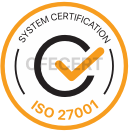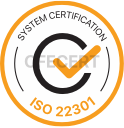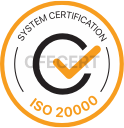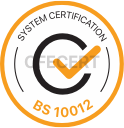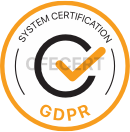Quality is often a policy and mission for many companies. It encompasses various aspects such as superior service, a skilled workforce, meticulous work, unconditional customer satisfaction, and bold and consistent investments. It is a critical step that ensures customer satisfaction and peace of mind, from production lines to service sectors.
The History and Processes of Quality:
Quality is a constantly evolving and changing concept from the past to the present. It first emerged during the industrial revolution when techniques like quality control and quality assurance were used. Later, modern quality concepts were developed, including quality management and process improvement methods. Until the 1980s, the prevailing concept was “Controlled Quality,” but towards the end of the 1980s, the perception shifted towards “Quality is Built,” and in the early 2000s, with the innovation wave brought about by rapid global changes and shifting conditions, quality transformed into “Quality is Designed.”
Although the birthplace of the quality concept is considered to be the United States, the initial applications are believed to have taken place in Japan. The pioneers of quality philosophy are W. Edwards Deming, Joseph Juran, and Kaoru Ishikawa, and quality is examined under four main headings:
- Inspection
- Quality control
- Quality assurance
- Total quality
Inspection: In the early stages of product manufacturing, inspection is the first step in terms of quality understanding. Products are checked, and any errors are identified. The primary approach is to prevent defective products from reaching consumers. When the causes of low quality are not investigated, there is no improvement, and the costs are eventually passed on to consumers as price differentials.
Quality Control: After the industrialization, increased mass production and product variety necessitated a shift to quality control. The use of numerical methods became mandatory, and by the 1920s, inspection had evolved into a process that included interim checks and input control. During quality control, inspection, testing, sampling, and observation are conducted, and the data obtained are evaluated using statistical methods to interpret quality. With statistical quality control, standards began to emerge, and quality control started to be conducted more scientifically.
Quality Assurance: During World War II, production was shifted to war materials, and the importance of quality for complex and sensitive products increased. This increased importance led to the formation of quality-related standards, and systematic efforts were made to produce goods and services in line with quality standards to meet customer expectations.
Total Quality: In quality initiatives, the participation of all employees is ensured, emphasis is placed on complete customer satisfaction, quality is considered in all processes, and continuous improvement is aimed for.
Henry Ford is believed to be the father of quality. The process that began with the detection of suitable and defective parts in the assembly section of the car production factory is now evident in all fields. When we talk about quality, we generally refer to “product and service quality” or “product quality.” Product quality is essentially a result, and the main quality elements that determine this result are as follows:
- Leadership Quality
- Human Quality
- Process Quality
- System Quality
- Hardware Quality
- Communication Quality
- Quality of Goals

What Can Be Done on World Quality Day?
World Quality Day is an international event celebrated every year on November 9th. Its goal is to emphasize the importance of quality management and processes, helping businesses improve their quality standards and awareness. On World Quality Day, you can work with your corporate leaders to create a plan to increase business productivity or provide training to enhance your employees’ quality understanding and awareness to improve your system’s performance and reach the quality goals. Each year has its own quality theme. By focusing on the theme of the year’s “World Quality Day,” you can organize the official celebration of the day. This global campaign increases awareness of the quality management profession.
Recent examples of quality themes include:
- 2023 Quality: Realizing Your Competitive Potential
- 2022 Quality Awareness: Doing the Right Thing
- 2021 Sustainability: Improving Our Products, Our People, and Our Planet
- 2020 Creating Customer Value
- 2019 The 100th Year of Quality (CQI’s 100th year)
- 2018 Quality: A Trust Issue
- 2017 Celebrating Everyday Leadership
- 2016 Making Operational Governance Vital
This year’s theme has been determined as “Quality: Realizing Your Competitive Potential.” Quality is a critical factor in gaining a competitive advantage in any industry. Organizations can bring their competitive potential to life through quality by:
- Understanding the needs and expectations of your customers, which is the first step in realizing your competitive advantage.
- Developing a quality culture specific to your organization.
- Setting your products and services apart from your competitors.
- Continuously improving your existing processes.
- Embracing innovation and managing risks.
Whether you’re an individual, a team, or an entire company, you can join the global movement to raise awareness and promote best practices in quality. Let’s make a difference together!
If you’d like to learn more or explore our trainings in management systems, contact us now at: sales@cfecert.co.uk.



